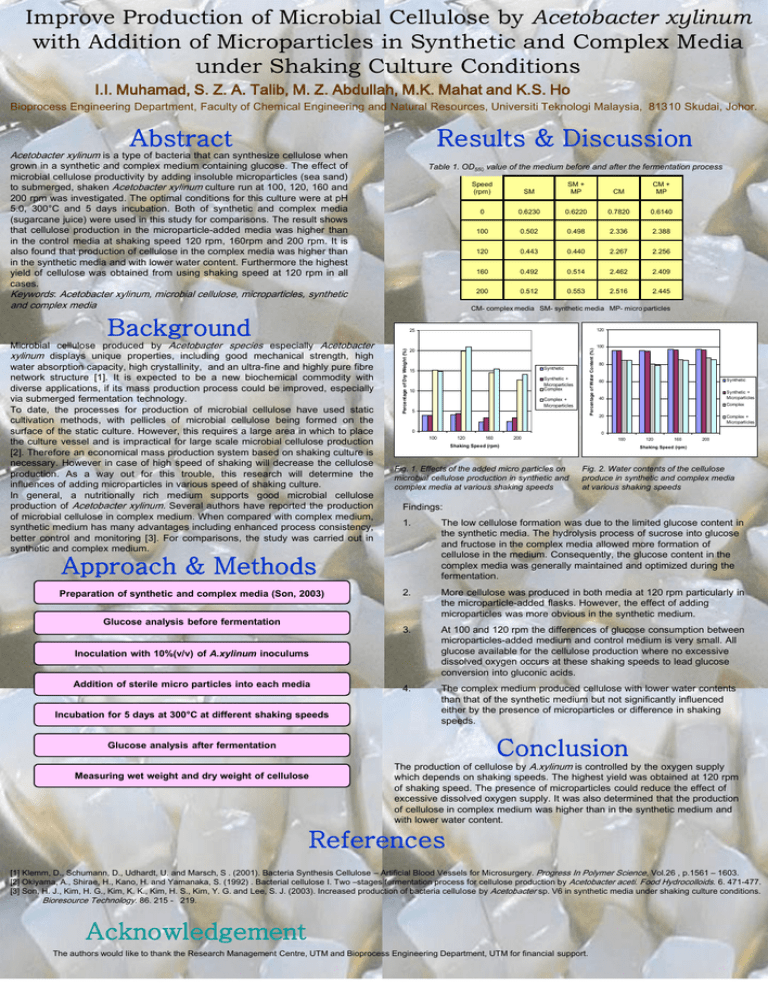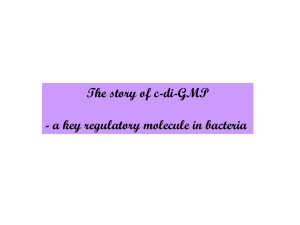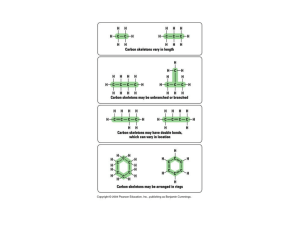Poster KK071205
advertisement

Improve Production of Microbial Cellulose by Acetobacter xylinum with Addition of Microparticles in Synthetic and Complex Media under Shaking Culture Conditions I.I. Muhamad, S. Z. A. Talib, M. Z. Abdullah, M.K. Mahat and K.S. Ho Bioprocess Engineering Department, Faculty of Chemical Engineering and Natural Resources, Universiti Teknologi Malaysia, 81310 Skudai, Johor. Abstract Results & Discussion Acetobacter xylinum is a type of bacteria that can synthesize cellulose when grown in a synthetic and complex medium containing glucose. The effect of microbial cellulose productivity by adding insoluble microparticles (sea sand) to submerged, shaken Acetobacter xylinum culture run at 100, 120, 160 and 200 rpm was investigated. The optimal conditions for this culture were at pH 5.0, 300°C and 5 days incubation. Both of synthetic and complex media (sugarcane juice) were used in this study for comparisons. The result shows that cellulose production in the microparticle-added media was higher than in the control media at shaking speed 120 rpm, 160rpm and 200 rpm. It is also found that production of cellulose in the complex media was higher than in the synthetic media and with lower water content. Furthermore the highest yield of cellulose was obtained from using shaking speed at 120 rpm in all cases. Keywords: Acetobacter xylinum, microbial cellulose, microparticles, synthetic Table 1. OD550 value of the medium before and after the fermentation process and complex media Speed (rpm) SM SM + MP CM CM + MP 0 0.6230 0.6220 0.7820 0.6140 100 0.502 0.498 2.336 2.388 120 0.443 0.440 2.267 2.256 160 0.492 0.514 2.462 2.409 200 0.512 0.553 2.516 2.445 CM- complex media SM- synthetic media MP- micro particles Background 120 20 15 Synthetic 10 Synthetic + Microparticles Complex Glucose analysis before fermentation Incubation for 5 days at 300°C at different shaking speeds 5 100 80 60 Synthetic 40 Synthetic + Microparticles Complex 20 Complex + Microparticles 0 100 120 160 200 100 Shaking Speed (rpm) Fig. 1. Effects of the added micro particles on microbial cellulose production in synthetic and complex media at various shaking speeds 120 160 200 Shaking Speed (rpm) Fig. 2. Water contents of the cellulose produce in synthetic and complex media at various shaking speeds Findings: 1. The low cellulose formation was due to the limited glucose content in the synthetic media. The hydrolysis process of sucrose into glucose and fructose in the complex media allowed more formation of cellulose in the medium. Consequently, the glucose content in the complex media was generally maintained and optimized during the fermentation. 2. More cellulose was produced in both media at 120 rpm particularly in the microparticle-added flasks. However, the effect of adding microparticles was more obvious in the synthetic medium. 3. At 100 and 120 rpm the differences of glucose consumption between microparticles-added medium and control medium is very small. All glucose available for the cellulose production where no excessive dissolved oxygen occurs at these shaking speeds to lead glucose conversion into gluconic acids. 4. The complex medium produced cellulose with lower water contents than that of the synthetic medium but not significantly influenced either by the presence of microparticles or difference in shaking speeds. Inoculation with 10%(v/v) of A.xylinum inoculums Addition of sterile micro particles into each media Complex + Microparticles 0 Approach & Methods Preparation of synthetic and complex media (Son, 2003) Percentage of Water Content (%) Percentage of Dry Weight (%) 25 Microbial cellulose produced by Acetobacter species especially Acetobacter xylinum displays unique properties, including good mechanical strength, high water absorption capacity, high crystallinity, and an ultra-fine and highly pure fibre network structure [1]. It is expected to be a new biochemical commodity with diverse applications, if its mass production process could be improved, especially via submerged fermentation technology. To date, the processes for production of microbial cellulose have used static cultivation methods, with pellicles of microbial cellulose being formed on the surface of the static culture. However, this requires a large area in which to place the culture vessel and is impractical for large scale microbial cellulose production [2]. Therefore an economical mass production system based on shaking culture is necessary. However in case of high speed of shaking will decrease the cellulose production. As a way out for this trouble, this research will determine the influences of adding microparticles in various speed of shaking culture. In general, a nutritionally rich medium supports good microbial cellulose production of Acetobacter xylinum. Several authors have reported the production of microbial cellulose in complex medium. When compared with complex medium, synthetic medium has many advantages including enhanced process consistency, better control and monitoring [3]. For comparisons, the study was carried out in synthetic and complex medium. Conclusion Glucose analysis after fermentation Measuring wet weight and dry weight of cellulose The production of cellulose by A.xylinum is controlled by the oxygen supply which depends on shaking speeds. The highest yield was obtained at 120 rpm of shaking speed. The presence of microparticles could reduce the effect of excessive dissolved oxygen supply. It was also determined that the production of cellulose in complex medium was higher than in the synthetic medium and with lower water content. References [1] Klemm, D., Schumann, D., Udhardt, U. and Marsch, S . (2001). Bacteria Synthesis Cellulose – Artificial Blood Vessels for Microsurgery. Progress In Polymer Science, Vol.26 , p.1561 – 1603. [2] Okiyama, A., Shirae, H., Kano, H. and Yamanaka, S. (1992) . Bacterial cellulose Ι. Two –stages fermentation process for cellulose production by Acetobacter aceti. Food Hydrocolloids. 6. 471-477. [3] Son, H. J., Kim, H. G., Kim, K. K., Kim, H. S., Kim, Y. G. and Lee, S. J. (2003). Increased production of bacteria cellulose by Acetobacter sp. V6 in synthetic media under shaking culture conditions. Bioresource Technology. 86. 215 - 219. Acknowledgement The authors would like to thank the Research Management Centre, UTM and Bioprocess Engineering Department, UTM for financial support.






